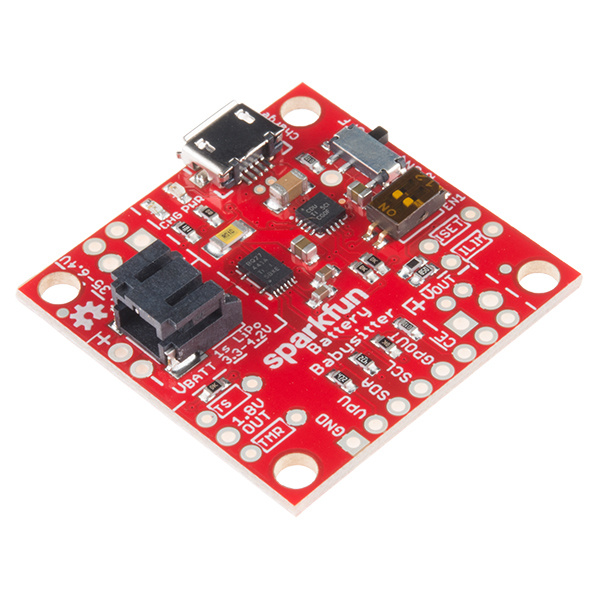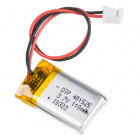Battery Babysitter Hookup Guide
Introduction
The SparkFun Battery Babysitter is an all-in-one single-cell lithium polymer (LiPo) battery manager. It's half battery-charger, half battery monitor, and it's all you'll ever need to keep your battery-powered project running safely and extensively.
The Battery Babysitter features a pair of Texas Instruments LiPo-management IC's: a BQ24075 battery charger and a BQ27441-G1A fuel gauge. The BQ24075 supports adjustable charge rates up to 1.5A, as well as USB-compliant 100mA and 500mA options. It also features power-path management, guaranteeing reliable power to your project.
The self-calibrating, I2C-based BQ27441-G1A measures your battery's voltage to estimate its charge percentage and remaining capacity. The chip is also hooked up to a current-sensing resistor, which allows it to measure current and power! It's a handy IC to have, especially if you ever need to keep an extra eye on your project's power draw.
Suggested Materials
You'll need a few components, accessories, and tools to get the Battery Babysitter up-and-running. The wishlist below includes all of the materials we use in this tutorial:
You can swap the RedBoard out for any Arduino-compatible development board. Regardless of whether it runs at 3.3V or 5V, 8MHz or 16MHz, any Arduino should work with the Battery Babysitter's fuel gauge IC.
Likewise, just about any single-cell lithium-polymer battery should work as well. The Battery Babysitter's charger can be set as low as 100mA or as high as 1.5A, so if your batteries are best charged at 1C, look for LiPo's with capacities ranging from 100mAh to 1500mAh.
Lithium Ion Battery - 1Ah
PRT-13813Finally, you'll need a 5V supply to charge the battery, or just connect a USB cable into the on-board USB connector.
Suggested Reading
If you want to read up on some of the theories and concepts that the Battery Babysitter builds upon, check out some of these tutorials before continuing on:




